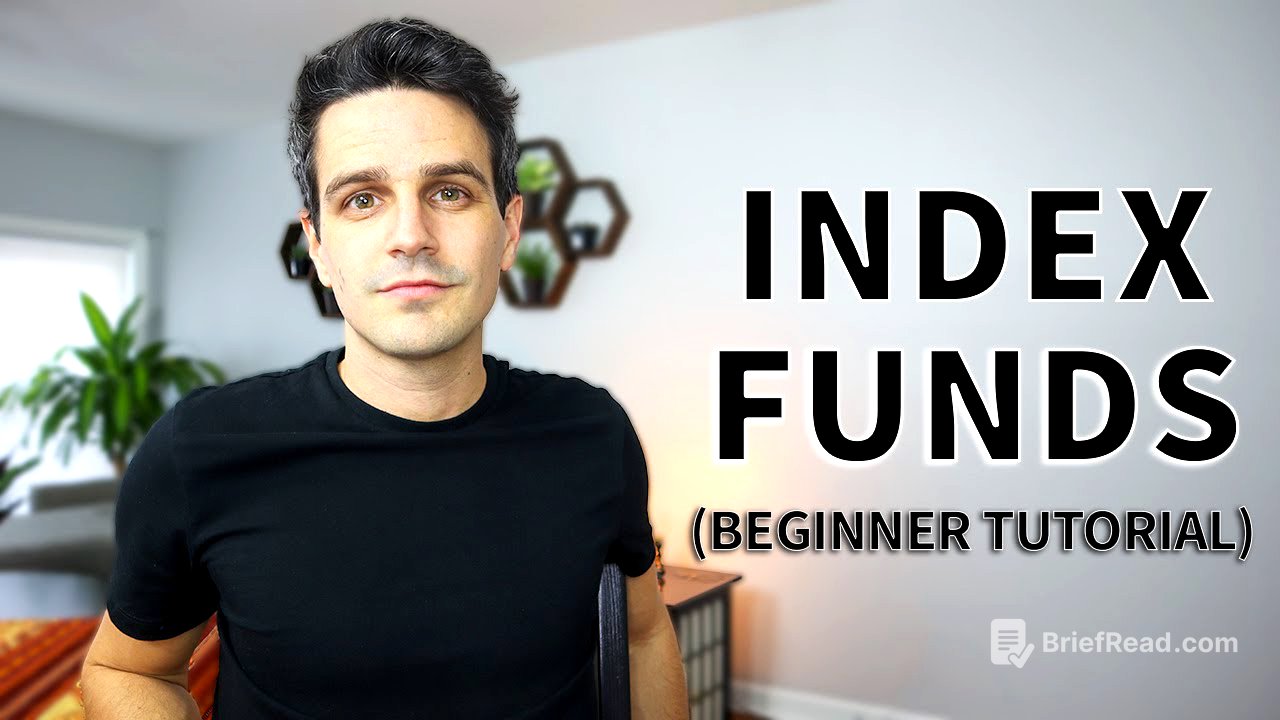TLDR;
This video provides a comprehensive guide to passive income generation through index fund investing. It covers the basics of index funds, their mechanics, pros and cons, how to choose the right one, opening a brokerage account, and making a purchase. The key takeaways are the long-term growth potential, lower risk compared to individual stocks, and the passive nature of index fund investing, which requires minimal effort once the initial investment is made.
- Index funds are a passive investment strategy suitable for long-term wealth building.
- They offer lower risk compared to individual stocks due to diversification across a broad market index.
- Choosing the right index fund involves considering minimum investment amounts, transaction fees, and expense ratios.
Start Here [0:00]
The video introduces the concept of generating passive income through stock market investments, specifically focusing on index funds. Index funds are described as a passive investment method suitable for everyone. The video promises to cover everything from the basics of what an index fund is to a live example of buying index funds.
What is an index fund? [0:42]
To understand index funds, it's helpful to first understand stocks. Buying a stock means buying shares of a single company, with investment performance tied to that company. An index fund, however, involves buying a single ticker symbol that represents a group of stocks mirroring a market index, such as the S&P 500, which includes the 500 largest U.S. companies. In simple terms, a stock is one company (e.g., Apple), while an index fund is a fund composed of many companies (e.g., Schwab S&P 500 Index Fund).
How an index fund works [1:50]
When you invest in an index fund, you're buying a fund that mirrors a market index like the S&P 500. The performance of your index fund is directly tied to the performance of the S&P 500. For instance, if the S&P 500 increases by 1%, your index fund also increases by 1%, and vice versa. Historically, the market has returned about 10% annually. Investing in the stock market carries risk, and returns are not guaranteed.
The Pros of Index Funds [2:53]
Investing in index funds has several advantages. First, it's a lower-risk investment because your investment is spread across many companies, not just one. Second, it offers long-term growth potential; while not a quick way to get rich, the chances of getting a return on your investment are high, with the stock market historically returning about 10% per year. Third, it's a passive form of investing, requiring no ongoing attention or research once you've made the initial investment.
The Cons of Index Funds [4:27]
Despite their advantages, index funds have some drawbacks. One is that you will not outperform the market; index funds offer lower risk but also lower potential rewards compared to individual stocks. Another con is slow growth; becoming a millionaire through index investing can take decades. Lastly, it can be boring because it's a passive, buy-and-hold strategy, unlike the more active and research-intensive approach of investing in individual stocks.
Choosing The Right Index Fund [6:30]
When selecting an index fund, consider several criteria. The minimum investment amount can limit your options based on how much money you have to invest. Transaction fees can occur depending on the brokerage you use; to avoid these, your index fund and brokerage should be the same company. The expenditure ratio, a small fee for managing the index fund, should ideally be below 0.05%. Finally, ensure you're buying an index fund and not an ETF (Exchange Traded Funds), unless you specifically intend to buy an ETF.
Opening A Brokerage Account [9:44]
To invest in an index fund, you need to open a brokerage account, which is an investment account. To open a brokerage account, go to a brokerage like Schwab, Fidelity, or Vanguard and open an account. The Index Fund you choose to invest in should also be your brokerage to avoid transaction fees. Schwab is recommended for its customer service, user-friendly interface, and research tools.
Buying An Index Fund [11:02]
Buying an index fund is straightforward. The process involves selecting the account, entering the ticker symbol of the desired index fund (e.g., SWPPX for the Schwab S&P 500 Index Fund), choosing to buy, and specifying the amount. Most index funds offer the option to reinvest dividends and capital gains, which can speed up growth and defer taxes until withdrawal. Index funds trade once a day, so the price you get is the closing price at 4:00 p.m. eastern time. Ideally, you should never sell index funds, but consider withdrawing when you retire or if some big thing happens in life.









